~JULIAN GATTO/THE LIGHT PACK/LITTLE CAKES
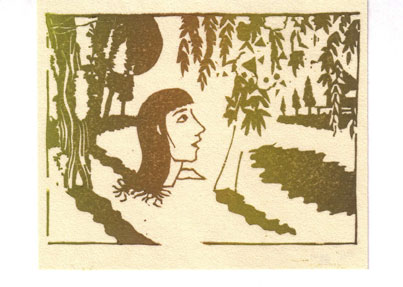
JULIAN GATTO, WOODBLOCK PRINT, edition of 25, 4-1/2 x 4 ins.,
($20) available at his current show, along with larger woodblock prints,
gouaches and watercolor ‘drawings’. . . . prices range from $300 – $500, and slightly up for the gouaches.
JULIAN GATTO – ‘THE LIGHT PACK’ – NOV 16 – DEC 16, 2007 – LAST WEEKEND !!
LITTLE CAKES LITTLE GALLERY – 625 EAST 6TH STREET – GATE BUZZER #1B
HOURS: FRIDAY to SUNDAY: 1-6 PM & BY APPOINTMENT
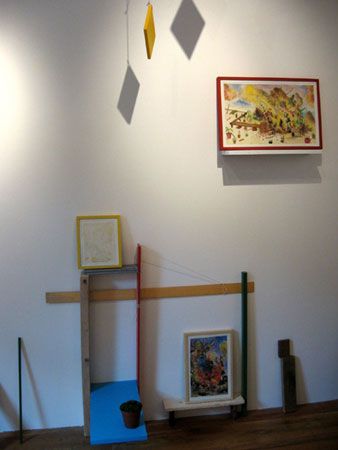
JULIAN GATTO – ‘THE LIGHT PACK’ – INSTALLATION SHOT/COURTESY:LITTLE CAKES
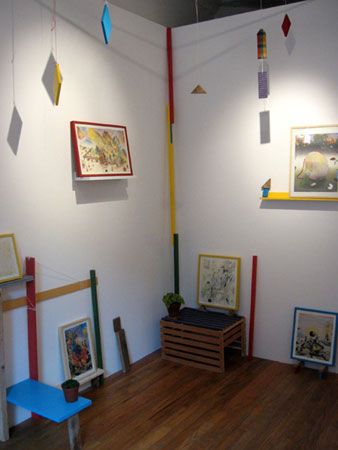
JULIAN GATTO – ‘THE LIGHT PACK’ – INSTALLATION SHOT/COURTESY: LITTLE CAKES
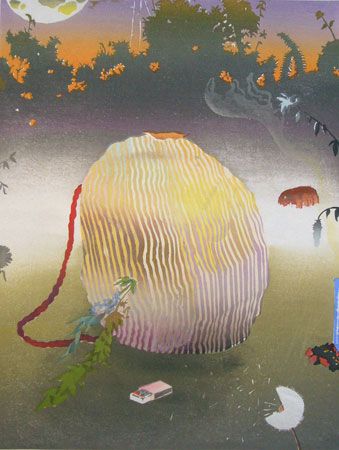
JULIAN GATTO – ‘THE BACKPACK’ – WOODBLOCK – PHOTO/COURTESY: LITTLE CAKES
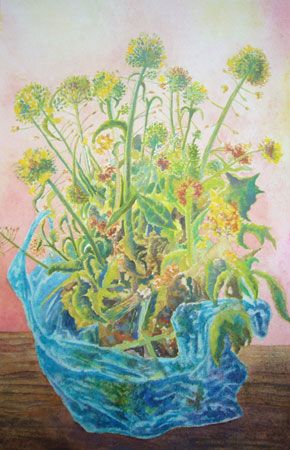
JULIAN GATTO – ‘GRILO’ – GOUACHE/WATERCOLOR – PHOTO/COURTESY: LITTLE CAKES
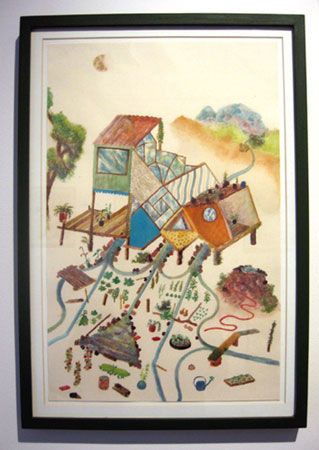
JULIAN GATTO – ‘THE LIGHT PACK’ – GOUACHE/WATERCOLOR – PHOTO/COURTESY: LITTLE CAKES
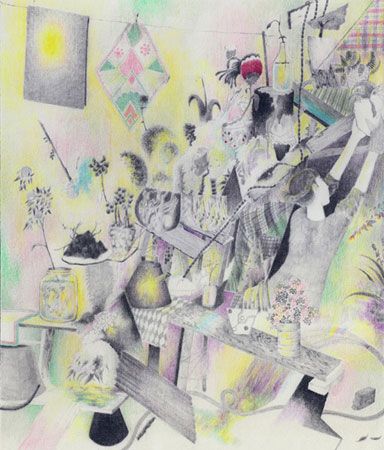
JULIAN GATTO – ‘MERCEDES’ – GOUACHE/WATERCOLOR – PHOTO/COURTESY: LITTLE CAKES
JULIAN GATTO – ALSO POSTED 3 PHOTOS – of his native ARGENTINA, believe it’s the towns, he mentions visiting in his written statement – and, which he termed: ‘INSPIRATION’ on the show’s website page:
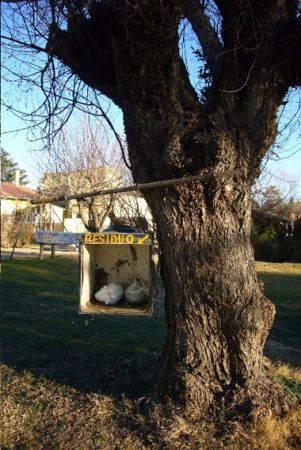
PHOTO: JULIAN GATTO/COURTESY: LITTLE CAKES
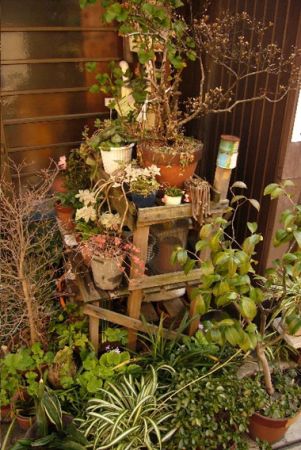
PHOTO: JULIAN GATTO/COURTESY: LITTLE CAKES

PHOTO: JULIAN GATTO/COURTESY: LITTLE CAKES
JULIAN GATTO is a graduate of COOPER UNION for the Advancement of Science and Art. He has shown in New York, Chicago, Los Angeles, Tokyo, Frankfurt, and his home town of Buenos Aires.
some excerpts from the WRITTEN STATEMENT – JULIAN posted for the show:
1.
. . “After living in New York for four years, I decided to move back to Buenos Aires last year, in May. Before moving to New York Ihad always lived n this city, in its central araes (mostly buildings). This time I wanted to live a little further out, in a neighbourhood similar to the one where my grandparents’ house was . . .
I visited my grandparents’ house after years of being away and found many objects and things that at the time I thought represented this feeling that I was trying to have in my work . . . (and worked on) installations that featured these objects. . .
(TAZA TAZA at LITTLE CAKES/2006)
. . . To me the idea of recycling and re-using was also important . . . (and, not just retrieving family history). Why are these things covered in dust when thy can still be used? Recovering these items was a way of refusing the need to produce new ones. Although those objects … gave off a feeling of warmth, I was also aware that they belonged to a different time. Nostalgia for the past is somewhat implicit in them. But I didn’t want to be nostalgic about the past. The present is very far from being ideal, but living in the past isn’t the solution either. Even though looking back can help us solve problems, now I wan to concentrate on the future.”
2.
“In February, I was in Japan. Walking around certain areas of Tokyo . . .(old Eastern Tokyo) . . . I noticed several things that reminded me of the places and things that I love in Buenos Aires; flower planters on the sidewalk and between narrow spaces between houses and corrugated steel sheets nailed to old wood homes. It was this warmth again, which to me, had to do with a certain kind of precariousness. People usually associate this concept with poverty or lack of resources. Something precarious is almost dysfunctional and unwanted. Things should be functional, new, and pristine. We buy them because we feel we can’t make anything that could work or look good.
When I came back from Japan, I traveled to two small towns in Argentina: Buratovich and Arcadia. There as well, I kept finding people that were solving some of their needs using recycled or found materials. They made structures that supported things, or that provided shelter; greenhouses that allowed plants to live in winter or tree houses that could be used for play. They adapted and transformed vehicles that could move around according to their needs and made stands that sold homemade food and other things. All these things worked. They did not fall apart. And although they all used the same basic materials . . . each one reflected something about the person that had made it . . . These things embodied a certain dedication, love even, and inventiveness. I decided I wanted to use this mode of making into my work.”
3.
‘. . . mobility and portability have become an important part of my work. Along with a watercolor box, I can take a piece of paper with me and paint where ever I want. Luckily, water is still available for free in most parts of the world.
. . . (for this show) all the materials needed would be collected from scraps and found things. The structures will be precarious, but will not fall down . . . and once the show is over, the whole thing can be disassembled or reassembled into something else.
The gouache and watercolor drawings reflect these ideas of mobility. They show things that you can carry around, or places you could go to and activities you could do once you’re there.”
more info & pix: LITTLE CAKES/JULIAN GATTO
check out: artlovers pix of JULIAN GATTO & the installation
